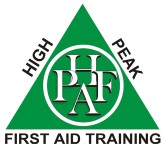The organisation responsible for providing guidance on Cardiopulmonary Resuscitation is the Resuscitation Council UK. They gather data and make an informed decision on how we should conduct CPR. As the end user, you would have to make the decision as to which protocol to follow. There are two options:
- Cardiac Arrest
- Respiratory Arrest
Cardiac Arrest
This is typically an adult who has a pre-existing health condition of Coronary Artery Disease (CAD). This includes Atherosclerosis, Angina, previous MI’s (Myocardial Infarctions). Other causes can be traumatic cardiac arrest brought on through injury or congenital heart disease (a structural defect that has been present since birth).
The Resuscitation Council promotes the “Chain of Survival”. You can see the diagram below. A chain is strong providing all the links are present. Take away one of those links and the chances of survival will decrease. Key links are the early access to the Emergency Services and an AED (Automated External Defibrillator).
If you have other people present ask them to call for help and you start chest compressions. If you are alone the call handler will direct you to the nearest AED if there is one within a reasonable distance. The protocol is:
- 30 compressions to 2 breaths
- Use the AED as soon as possible
Respiratory Arrest
Children fall into this category as they have not had the time to build up heart disease. Children are much more likely to succumb to choking, drowning and asphyxiation. Some children will suffer from Sudden Cardia Arrest (SAC) associated with congenital defects.
Adults can also succumb to the above. However, to keep things simple, we assume an adult had a cardiac arrest unless it is obvious they have drowned or choked.
If you have other people present ask them to call for help and you start CPR. If you are alone the call handler will direct you to the nearest AED if there is one within a reasonable distance. The protocol is:
- 5 initial breaths to deliver some oxygen
- 30 compressions and 2 breaths for 1 minute
- Get help if you have not already done so
- Apply the AED when it arrives
The practical aspects will be discussed and delivered during training. The guidelines are due to be update at the start of May 2021. You can read more details here at the Resuscitation Council UK.





